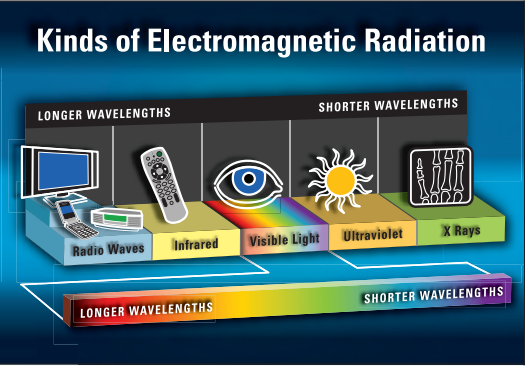Endless Energy
Energy comes in different forms. Light is a form of energy. So is heat. So is electricity. Often, one form of energy can be turned into another. This fact is very important because it explains how we get electricity, which we use in so many ways. Electricity is used to light streets and buildings, to run computers and TVs, and to run many other machines and appliances at home, at school, and at work. One way to get electricity is to burn a fuel like oil or coal. This makes heat. The heat then makes water boil and turn into steam. The steam runs a machine called a turbine that produces electricity. Often, this electricity then goes into a public power system that sends it out, through wires, to homes, schools, and businesses over a wide area. This method for making electricity is popular. But it has some problems. Our planet has only a limited supply of oil and coal. They are not renewable fuels. Once they are used, they are gone forever. Also, they give off gases when they are burned. These gases may make the air dirty, or polluted, and some of them may change Earth’s climate.
Free and Clean Energy
Another way to make electricity uses sunlight. Sunshine is free and never gets used up. Also, there is a lot of it. The sunlight that hits the Earth in an hour has more energy than the people of the world use in a year. A little device called a solar cell can make electricity right from sunlight (“solar” means having to do with the Sun). A solar cell doesn’t give off any gases. It doesn’t even make any noise. A solar panel is a group of solar cells that work together. The use of solar cells is growing fast in the United States and many other countries.
Solar Cells Galore
Solar cells and solar panels have lots of uses. They are in everyday things like calculators, watches, and flashlights. There are many toys, radios, and MP3 players are powered by solar generator. There are solar-powered cell phones and pagers. Using solar power with devices like these means you never have to worry about batteries. Solar panels are sometimes used to make the electricity to light up road signs and bus stops. They may make the electricity that makes roadside emergency phones or parking meters work. The solar generator with solar panel is also provided by ATO solar generator, it could solve your emergency electricity problem. Even some ATMs (machines that let you get money from or put money into your bank account) have solar panels.
Power for Buildings
The ceiling lights and all kinds of machines and appliances used at home, school, and work get their electricity from the wires running through the building. Usually, this electricity comes to the building from the public power system, or grid. But solar generator with solar panels can also be used along with power from the grid. People sometimes put solar panels on their homes. Large buildings may have them as well. They make it possible to use less of the grid’s costly electricity. In addition, they are a backup in case of a power failure, or blackout.
In some areas the grid itself gets some power from solar panels.
Energy from Sunshine
The Sun constantly gives off energy. The energy is carried through space as electromagnetic radiation. There are several types of electromagnetic radiation. Light is one type. Radio waves are another. Electromagnetic radiation travels like waves in water. Like water waves, it is a series of ups and downs. One way various types of electromagnetic waves differ is in their wavelength. This is the distance between two ups (or two downs) in a row. The wavelengths of radio waves are longer than those of light. Among types of light, red has a longer wavelength than blue.

How Solar Cells Use Light
Only part of the energy sent toward Earth by the Sun actually makes it to Earth’s surface. Some solar energy gets bounced back into space. Some gets absorbed by the air. Most of the solar energy that does make it to Earth’s surface is in the form of visible light. Solar cells can use the energy of this light to make electricity. But they don’t work equally well with all forms of light. Different types of solar cells use different wavelengths. This means a cell can use only some of the solar energy that it receives.

Understanding Electricity
People often think of electricity as something that fl ows. In fact, that is pretty much right. Electricity is a stream of tiny particles called electrons. The stream is called an electric current.
There are two kinds of current. One is DC. This is direct current. It always fl ows in the same direction. Batteries and solar cells make DC. The other kind of current is AC. This is alternating current. It reverses direction many times a second. The grid has AC. Most home electrical devices use AC.
Measuring Electricity
Electric power is the rate at which electric energy is used. It is measured in watts. A 100-watt light bulb is more powerful than a 60-watt bulb. It uses more electricity. (When people talk about large numbers of watts, they use larger units: a kilowatt is 1,000 watts; a megawatt is 1 million watts.) Another important unit is the watt-hour. It measures the electric energy produced or used during a period of time. It equals 1 watt of power over a period of one hour. A similar but larger unit is the kilowatt-hour. This is 1,000 watts over an hour. A 100-watt light bulb that stays on for 10 hours uses 1,000 watthours of electric energy. This amount is the same as 1 kilowatt-hour.
